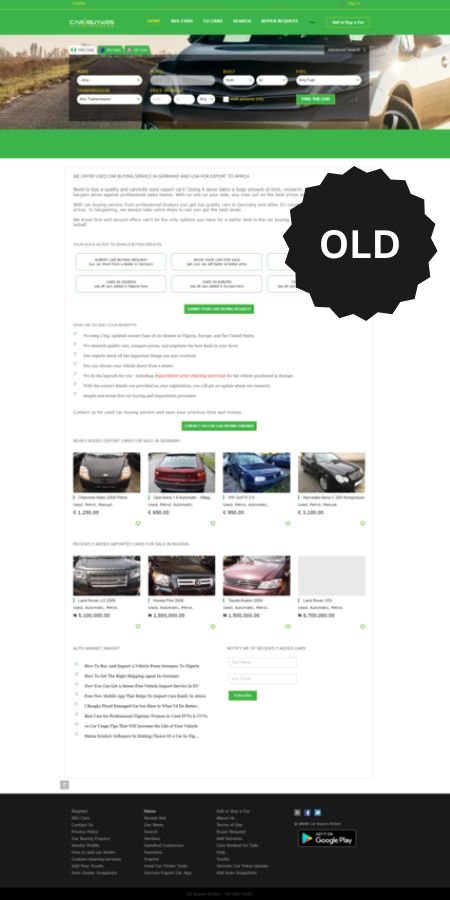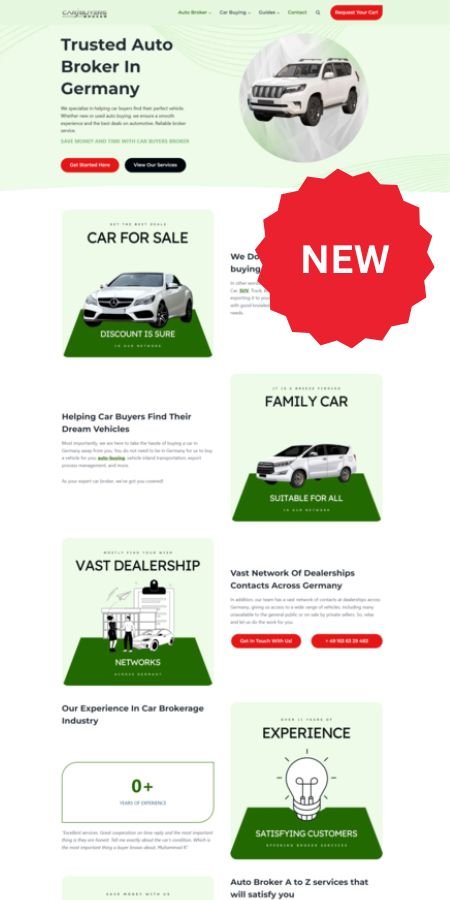Top Mistakes to Avoid During a Website Relaunch
A website relaunch is like a grand reopening for your digital storefront. It’s an opportunity to refresh your online presence, improve user experience, and ensure your site aligns with your business goals. However, with all the potential benefits, a relaunch can also present significant risks if not handled carefully. Avoiding common pitfalls is crucial to ensuring your website relaunch is a success. Here, we’ll cover the top mistakes to avoid during a website relaunch and how to avoid them.
Let’s Give Your Website A New Look And Feel!
Ready to relaunch your website? Contact us today for a consultation, and let’s discuss how we can help you avoid these mistakes and make your website relaunch a success.
What is a Website Relaunch?
A website relaunch is more than just a visual makeover. Imagine your website as a storefront that needs more than just a fresh coat of paint. Over time, your site might become outdated, cluttered, or not as user-friendly as it once was. A relaunch is your chance to reorganize, update, and optimize your site—making it modern, fast, and aligned with the needs of your visitors today. It’s about improving every aspect of your site, from design and content to performance and SEO, to create a better experience for your business and your audience.


Why Is Avoiding Mistakes in a Website Relaunch Crucial?
A website relaunch can significantly impact your business, but it’s not without its risks. Mistakes can lead to a drop in search engine rankings, frustrated users, and lost revenue. Understanding and avoiding common mistakes ensures that your relaunch drives growth instead of causing setbacks.
1. Neglecting SEO During the Redesign
One of the most critical mistakes during a website relaunch is not paying attention to SEO. You can lose the search engine rankings you’ve worked hard to build if you’re not careful. When your site structure changes or content is moved, it’s essential to use 301 redirects to guide search engines and users to the new locations. Please do this to avoid broken links and a significant drop in traffic.
How to Avoid It: Conduct a thorough SEO audit before and after the relaunch. Map out all existing URLs and ensure proper redirects are in place. Additionally, during the redesign, focus on maintaining or improving on-page SEO elements like meta descriptions, title tags, and headers.
2. Ignoring Mobile Optimization
With more people browsing on mobile devices than ever, we need to pay attention to mobile optimization. If your site isn’t mobile-friendly, you risk alienating a large portion of your audience, leading to higher bounce rates and lower engagement.
How to Avoid It: Ensure your relaunch includes a responsive design that works seamlessly on all devices. Test your site on various screen sizes to ensure the user experience is smooth and intuitive, whether on a smartphone, tablet, or desktop.
3. Failing to Backup the Current Website
Imagine launching your new site only to realize that some critical data is missing or corrupted. With a proper backup of your old website, you could retain valuable content, customer data, or design elements, making recovery more accessible and manageable.
How to Avoid It: Before relaunching, create a complete backup of your existing website. Store this backup securely, and ensure it includes all files, databases, and content. This way, you can restore your site quickly if something goes wrong during the relaunch.
4. Overlooking Analytics and Tracking Setup
When you relaunch your website, it’s easy to overlook the reinstallation or reconfiguration of analytics tools. With proper tracking, you will have the data you need to measure the success of your new site or identify areas that need improvement.
How to Avoid It: Before launching, Double-check that all analytics tools, like Google Analytics, are correctly set up. Ensure that your tracking codes are working and that you monitor key metrics like traffic, conversion, and bounce rates from day one.
5. Not Testing Thoroughly Before Launch
Launching a website without thorough testing is like opening a store without checking if the doors work. Bugs, broken links, and usability issues can frustrate users and damage your reputation.
How to Avoid It: Conduct extensive testing before your relaunch. This should include functionality testing to ensure all features work as intended, load testing to check how your site handles traffic, and usability testing to ensure a smooth user experience. A comprehensive pre-launch checklist can help catch potential issues before they affect your users.
How to Ensure a Successful Website Relaunch
To ensure a successful website relaunch:
- Start by planning thoroughly.
- Set clear goals, conduct an SEO audit, and create a backup.
- Prioritize mobile optimization and remember to set up your analytics correctly.
- Test everything before going live.
By avoiding the common mistakes outlined above, you can ensure your website relaunch boosts your business rather than hinders it.
Real-World Examples
Consider the case of a retail company that lost 30% of its traffic overnight due to broken links and missing redirects during a poorly managed relaunch. In contrast, another business saw a 40% increase in online sales after a carefully planned and executed website relaunch that included a mobile-first design and SEO-focused content strategy. These examples highlight the importance of avoiding these mistakes and the potential rewards of getting it right.
Conclusion
A website relaunch is a powerful tool for revitalizing your online presence but requires careful planning and execution. You can ensure your relaunch succeeds by avoiding common pitfalls like neglecting SEO, ignoring mobile optimization, and failing to test thoroughly. If planning a website relaunch, consider partnering with professionals who can guide you through the process and help you avoid these costly mistakes. Your website is a critical asset—ensure it works for you, not against you.



